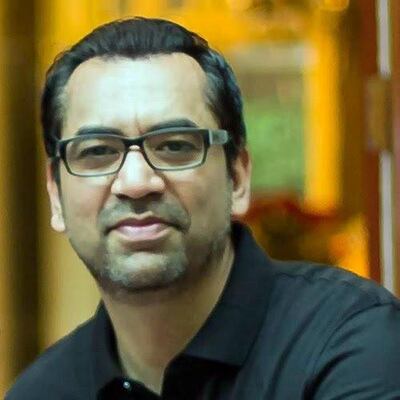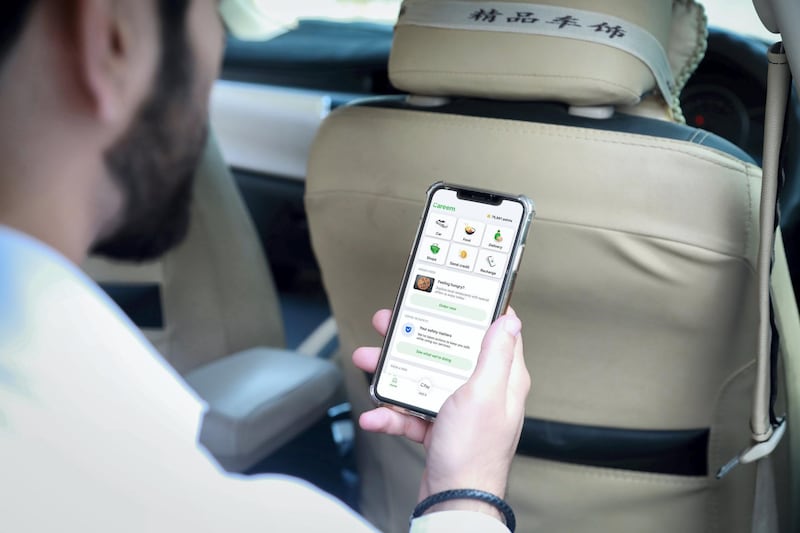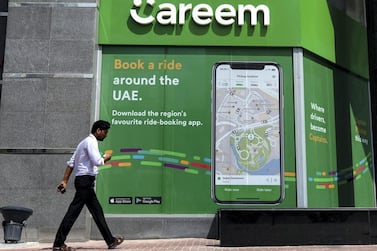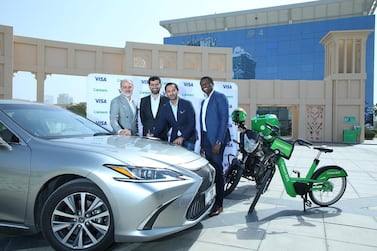Uber-owned Careem is leveraging artificial intelligence (AI) as it looks to evolve from its original business model and move more than just people.
The company's new head of engineering is training employees, developing a competitive internship programme and leveraging the company’s new remote-first culture to recruit senior staff as it builds real-time machine learning capabilities.
"The biggest pivot in 2021 is a greater focus on that [customer] feedback loop," Baber Shaikh, VP of engineering and mobility, told The National. "How do we make our data systems close to real time? How do we begin to take advantage of 5G?"
The next-generation network will exponentially increase data flows, allowing Careem to build algorithms that better anticipate and cater to consumer preferences as the company pivots to being a mobility company that moves not just people but money, food and products, too.
The company is in the midst of a business transformation strategy and a return to growth following a year that saw its ride-hailing business decline sharply but ushered in new areas of potential. Careem’s delivery business grew four-fold and mobile payments doubled. Its $50 million Super App, which rolled out in July, pulled all of its services – ride-hailing, grocery and pharmacy delivery and Careem Pay – into a single programme. Ninety-six per cent of Careem users made the switch to the app.
To keep pace with what Mr Shaikh called “a rapid pivot”, the company is hiring across its engineering unit, which currently employs about 170 people. The company has 212 job openings right now.
Its new engineering lead is focused on developing a team that is ready to handle a new era in machine learning. In 2020, common wisdom around consumer data science went out the window, he said.
“Historically, what companies took pride in was the quantity or the quality of the data. If I had lots of data going back a decade, I had an advantage on you because you could model off that data” and begin to make predictions and anticipate preferences.
“But when the pandemic happened, customer behaviour changed. And because that customer behaviour changed, it reset a lot of the trends. You had invalidated the historical data that existed.”
Building algorithms that compare moment-to-moment rather than seasonal or annual changes is Careem’s new approach to development.

Mr Shaikh is a pragmatist. He sees his role as developing technology that helps ferry anything from Point A to Point B in the cheapest and fastest way possible.
A pressing challenge right now is building technology infrastructure to better manage the supply side of consumer demand – whether that’s during a peak travel period in Dubai or the types of groceries and when people want them in Karachi. The insights can help drive down both costs and time.
To build these capabilities, Mr Shaikh is focused on building a pipeline of talent from local universities. He wants Careem internships to have the prestige of bagging a summer gig at Google or Facebook for Stanford or CalTech students.
“I want to see the reverse brain drain,” Mr Shaikh said, referring to the phenomenon of well-educated young adults fleeing major education hubs in the region for more attractive employment opportunities elsewhere.
Building research relationships with universities in the region will also help power the development of intellectual property. This is an area of focus that helped propel the US and China to become global leaders in artificial intelligence.
He is optimistic about the possibility.
“We have an ecosystem that is being built here which mirrors [Silicon] Valley very closely. I think we will continue to pull great talent from the Valley and from the big tech hubs into our region.”
He would know. Mr Shaikh joined the company four months ago following a 20-year career on the West Coast of the US, where he developed products for Microsoft’s Xbox and worked on the gaming unit of chipmaker Nvidia.
His five years at Nvidia were instructive, he said, as the California-based company transitioned from a traditional chipmaker to one underpinned by artificial intelligence, selling its semiconductors to power Tesla’s autonomous vehicle technology and growing exponentially, outpacing Intel as the biggest US chipmaker by market cap in July.
While he managed engineering teams from Moscow to Shanghai, over the last few years Mr Shaikh said the technology news coming out of the Middle East, and Dubai in particular, piqued his interest. Stories about Dubizzle, Souq, Property Finder and Careem gave him the impression of “a lot of positive energy coming out of the region”.
“The mission [Careem] had around simplifying the lives of the people in the region was really exciting to me,” he said, adding that the speed and potential to build something entirely new was a challenge he was ready for in this phase of his career.
“When we were building Xbox, we inherited payments, we inherited [user] identity, we inherited a good tech infrastructure. So when we were launching Xbox Live, we just kind of took those things for granted. That's not what was happening here.
“Careem was not just spearheading ride-hailing at its core, it was spearheading data and AI, mapping and technology. It takes a tremendous amount of energy and effort and a sense of direction and mission.”
To take it to the next level, Mr Shaikh is developing a more tech-focused mentorship programme internally, and leaning on the company’s remote-first work culture – first introduced in September – to attract international talent.
As for parent company Uber, which finalised its $3.1 billion purchase of Careem last year, Mr Shaikh said so far the company has had no say in day-to-day business decisions or strategy. The two companies are, however, in ongoing conversations to share intellectual property.
“Uber can accelerate our learnings in terms of algorithms and models,” he said, and minimise the “experimentation” phase of building a new product.
“What I want to make progress on as somebody who's helping lead engineering, is to minimise mistakes, learn from experience and then move rapidly to take advantage of all the goodness that's happening in the region.”








